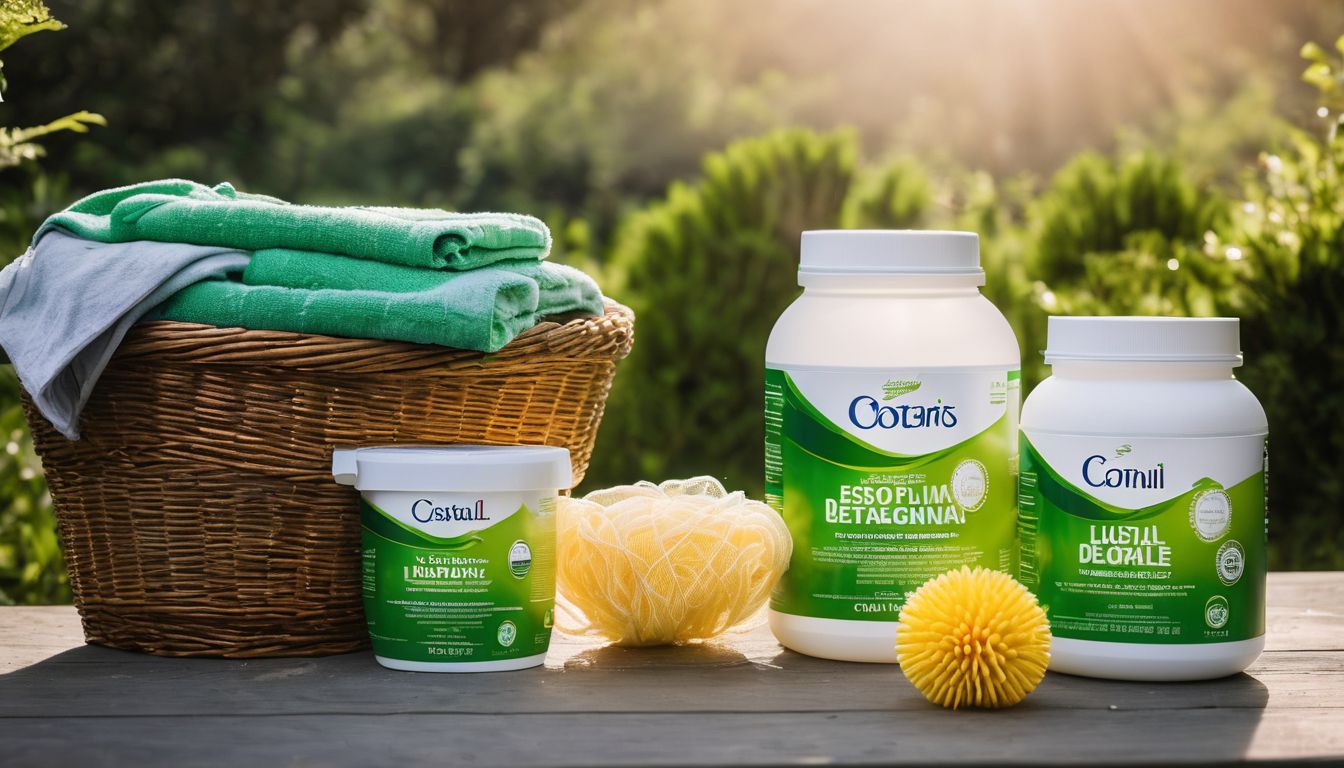It may be a surprise that a widely used substance such as paint, whether it be for interior or exterior use, can pose a threat to human health and the environment. The culprit: conventional paints containing high levels of volatile organic compounds. VOCs are carbon-based organic chemical compounds that have high enough vapor pressures under normal conditions to significantly vaporize and enter the atmosphere. They are generally emitted from the burning of gasoline, wood, and coal or from solvents found in some cleaners, paints and glues.1 For a room or an exterior that is freshly painted, opt for a low VOC or no VOC paint.
BENEFITS for the Environment:
In the atmosphere, VOCs react with nitrous oxides to produce ground level ozone, or smog.2 While naturally occurring ozone in the stratosphere serves as a protective shield against the sun’s UV radiation, man-made ozone smog creates contaminates in our landfills, groundwater, and our fresh air. Such ozone is also harmful to crops, trees, and ecosystems, accounting for $500 million in crop destruction in the US each year.3 For example, ground level ozone inhibits a plant’s ability to produce and store food, interferes with an ecosystem’s water movement, and mineral nutrient cycling.4 Therefore, a crop’s natural reproduction and health is sacrificed. The EPA provides a good explanation of the environmental impact of ground-level ozone.
BENEFITS for Your Health:
From its strong and unpleasant smell, it should be no surprise that paint is highly toxic. According to the EPA, indoor concentrations of VOCs are on average 2-5 times greater than outdoor concentrations but can be up to a thousand times greater when paint is drying.5 Research shows that there are 300 toxic chemicals and 150 carcinogens potentially present in oil based paint6 that all have varying effects depending on the individual’s age, medical history, length of exposure, and concentration of the chemical. Short-term exposure to fumes can result in headaches, nausea, eye irritation, and dizziness.7 Pregnant women, children and those suffering from respiratory illness have a greater risk of health problems associated with paint. The effects of long-term exposure are more severe and include damage to the central nervous system and even liver and kidney disease.8 Known carcinogens and neurotoxins such as benzene, formaldehyde, toluene, and xylene are commonly used VOCs in conventional paints.9
https://web.archive.org/web/20160404043436if_/http://www.youtube.com/embed/x5-5rKXRiIM 10
Cost: Moderate
Due to an increased awareness and demand, paint manufacturers have started to sell low- and no-VOC paints at prices comparable to conventional paints. Although natural paints achieve color by using naturally occurring plants and oils, they generally cost twice as much as conventional paints and aren’t necessarily VOC free.11
Time and Effort: Low to Moderate
Low- and no-VOC paints are formulated to perform comparably to the more toxic conventional paints; however, with some brands you may need to apply an additional coat or two. As many biodegradable, water-soluble, noncaustic and non-toxic products are now available, the clean-up and disposal are less hazardous as well. When finished with a project, water-based paint cans, drips, and smudges can be easily cleaned up with warm water and soap. Also, because non-toxic paints do not contain latex, solvents or lead, their disposal is not as regulated. Reuse, recycle, or donate unwanted materials. If you are still uncertain about disposal in your area, call 1-800-CLEAN-UP for specific guidelines.
Types of Paint:
Paints can be divided into two overarching categories: alkyd (oil-based) and latex (water-based). In general latex paints are less harmful than alkyd, so try to choose them as much as possible.12 Below is a list of non-toxic or low-toxic paint options:
Natural Paint: Made from natural ingredients such as plant oils and resins, clay, casein, and cellulose, these paints are the least toxic coloring choice. Some of the paints require the user to mix the color pigments with its liquid base prior to use. Due to the lack of added fungicides, natural paint tends to spoil quicker than synthetic paint so you should not mix it until you are ready to use it. Natural VOC may be present in these paints, but for the most part they are harmless unless you have a specific allergy to them. Some natural paints are not suitable for all surfaces so determine the compatibility between your project and the paint before making your purchase. Natural paints are considered the best choice for your health and the environment.
In the case that natural paints are not available in stores, you may have to place an order online. If you are having a hard time determining the color of paint from the images on the computer screen, you can order a sample palette for a minimal fee. If you want to try making your own natural paint, The Natural Paint Book by Lynn Edwards and Julia Lawless is a good starting point.
Where to find:
Bioshield Natural Paints offers a wide variety of both ready mixed and mix yourself paints, all of which are zero VOC and non-toxic. They also have thinners, stains and finishes. You can search for retailers in your area that offer their products by clicking on the “Retailer” link and then on “Find a Retailer.” Green Planet Paints and The Real Milk Paint Company offer similar paint products.
No-VOC or Zero-VOC:
Despite the claim, paints under this label are likely to have a small amount of VOCs. Under EPA guidelines, no-VOC paints can contain up to 5 grams of VOC per liter paint (g/L).14 VOC content tests are conducted prior to the addition of color, which typically contains more VOC. The limit for Zero-VOC paint is technically 5 g/L, but colored no-VOC paints will more likely contain around 10 g/L. Paints under this category are not necessarily non-toxic so do not make that assumption unless it is labeled as so. The EPA released this information in a written report. The standards are up to date under the guidelines referenced by the EPA and greenseal.org
Where to find:
Low-VOC:
This category encompasses paints with a wide range of VOC concentrations, so do not automatically select paints marked as such. Latex paints with less than 250 g/L and alkyd paints with less than 380 g/L can be labeled as low-VOC. Paints on the lower end of this spectrum tend to include the specific VOC concentration on their canisters. Try to select paints with the lowest level that will meet your needs. Most low VOC paints marketed by reputable paint manufacturers usually meet the 50 g/L VOC threshold. Paints with the Green Seal Standard (GS-11) mark are certified lower than 50 g/L (for flat sheen) or 150 g/L (for non-flat sheen). Low VOC paints may continue to emit an odor until they are fully dry. If you are particularly sensitive, make sure the paint you buy contains fewer than 25 grams/liter of VOCs.
Where to find:
Low-VOC paints are now more widely available on shelves next to conventional paints so check your local stores before you place an online order.
- Dutch Boy: Look for the Clarity line of paints, as it is their low VOC option.
- Sico: They offer selections of both no-VOC and low-VOC paints.
- Benjamin Moore: Eco Spec is their line of low VOC products.
https://web.archive.org/web/20160404043436if_/http://www.youtube.com/embed/xFg9h-age7I 16
Note: Chemicals can be added to mask the fumes of VOC17 so do not mistake low odor and no odor as equivalent to low VOC and no VOC. Always check the specific VOC measurements. Even when using more environmentally responsible paints, you should still take the same precautions you would with conventional paints (i.e. adequate ventilation). To save money and reduce waste, measure your project carefully and purchase the amount of paint needed. If you happen to have leftover paint you should recycle it, donate it, or dispose of it properly. You may want to save some or all of your leftover paint, depending on how much you have and storage space, for future use or retouching needs as well!
The Lead Issue:
Although lead-based paint has been banned since 1978,18 it can still be an issue for older homes. Lead can be especially harmful to children and women in their childbearing years. In children, low levels of exposure can cause nervous system damage, learning disabilities, speech and language difficulties, poor muscle coordination, and hearing damage.19 Adults may experience high blood pressure, nerve disorders, digestive problems, fertility problems, impaired concentration and memory, and muscle pain. Pregnant women who are exposed have an increased susceptibility to illness during pregnancy and the unborn fetus has an increased risk for brain damage and death. If your home was built pre-1978, you should have the paint tested for lead when remodeling or in the event of paint chipping or damage. Call 1-800-424-LEAD to find an inspector in your area.




